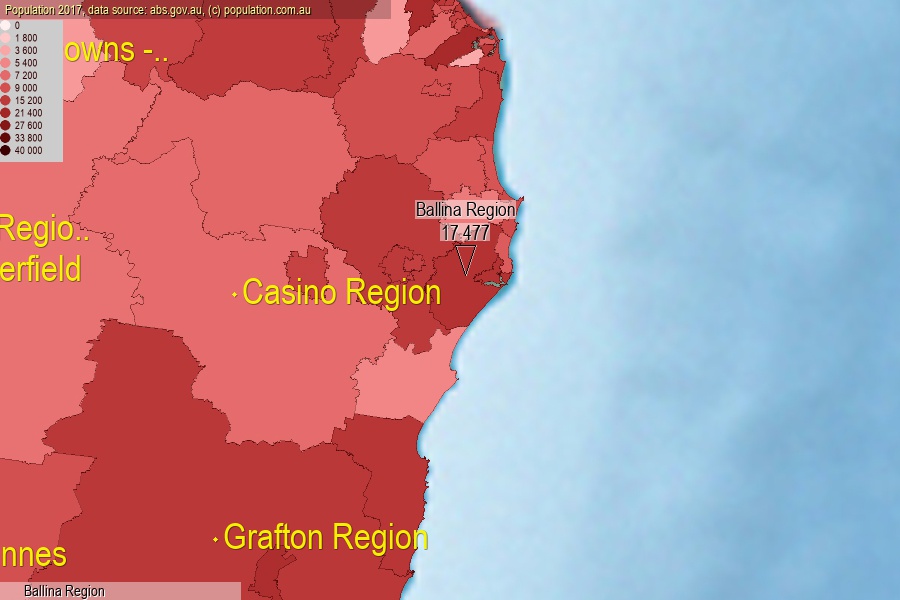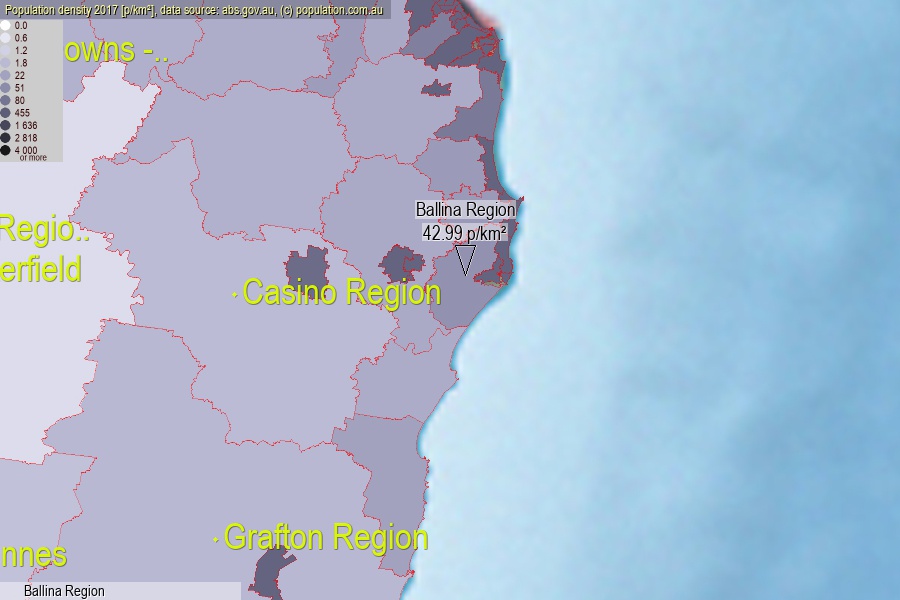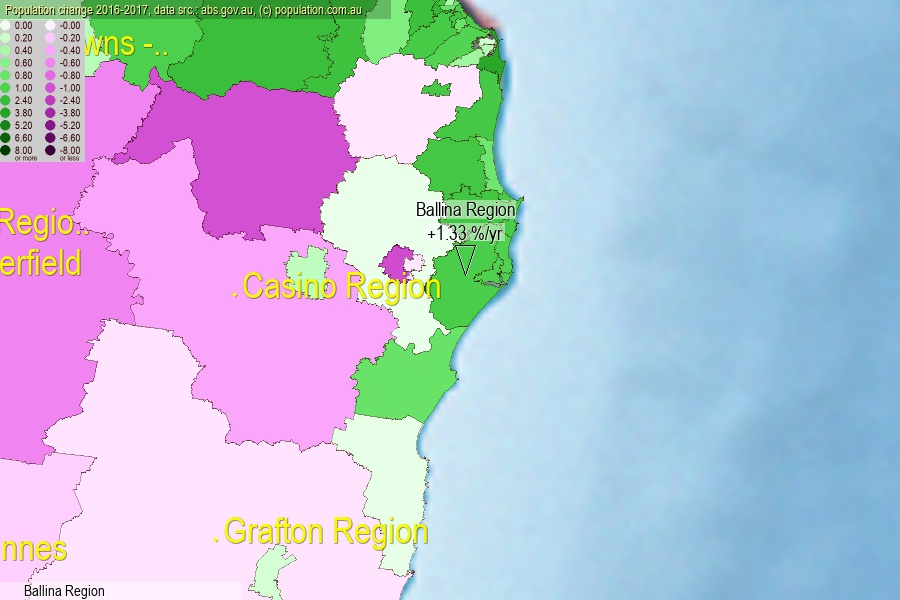 population.com.au
population.com.auLast official estimated population of Ballina Region (as Statistical Area Level 2) was 17 477 people (on 2017-06-30)[2]. This was 0.07% of total Australian population and 0.22% of NSW population. Area of Ballina Region is 406.50 km², in this year population density was 42.99 p/km² . If population growth rate would be same as in period 2016-2017 (+1.33%/yr), Ballina Region population in 2025 would be 19 431. [0]



Click to enlarge. Ballina Region is located in the center of the images.
Population [people], population density [p./km²] and population change [%/year] [2]
View borders » (new window) [4]
[1991-1992] +3.24 %/Yr.
[1992-1993] +2.94 %/Yr.
[1993-1994] +2.65 %/Yr.
[1994-1995] +2.30 %/Yr.
[1995-1996] +1.10 %/Yr.
[1996-1997] +0.33 %/Yr.
[1997-1998] +0.65 %/Yr.
[1998-1999] +2.35 %/Yr.
[1999-2000] -0.09 %/Yr.
[2000-2001] +0.67 %/Yr.
[2001-2002] +1.84 %/Yr.
[2002-2003] +1.39 %/Yr.
[2003-2004] +0.58 %/Yr.
[2004-2005] +0.68 %/Yr.
[2005-2006] +0.90 %/Yr.
[2006-2007] +0.49 %/Yr.
[2007-2008] +0.58 %/Yr.
[2008-2009] +0.71 %/Yr.
[2009-2010] +0.45 %/Yr.
[2010-2011] +0.39 %/Yr.
[2011-2012] +1.20 %/Yr.
[2012-2013] +0.95 %/Yr.
[2013-2014] +0.94 %/Yr.
[2014-2015] +1.17 %/Yr.
[2015-2016] +2.02 %/Yr.
[2016-2017] +1.33 %/Yr.
[0] Calculated with linear interpolation from officially estimated population
[1] Read more about SA2 and Australian Statistical Geography Standard (ASGS) on abs.gov.au
[2] Population data from Australian Bureau of Statistics (Population and density: 2017; change: 2016-2017)
[3] Digital Boundaries: Australian Statistical Geography Standard (ASGS) 2016.
[4] Border coordinates are simplifyed using Ramer-Douglas-Peucker algorithm.